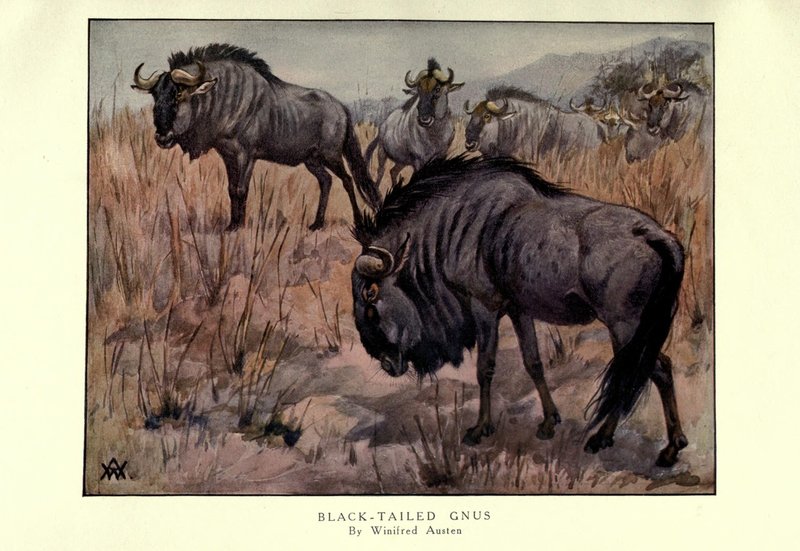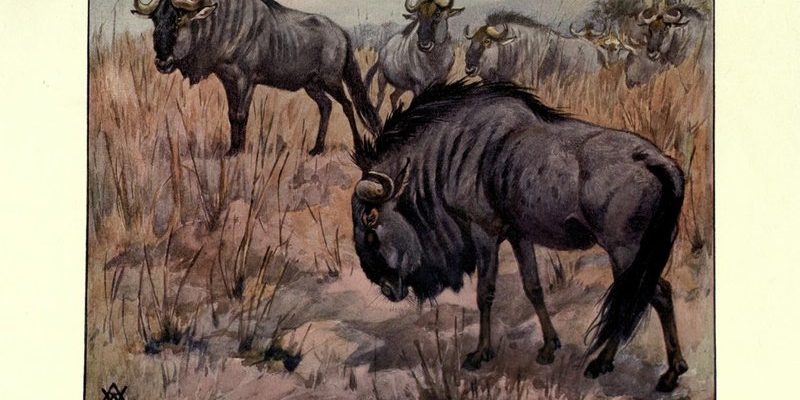
Gnues are not just interesting because of their looks; they play a vital role in their ecosystem. They symbolize the interconnectedness of life on the savanna, influencing everything from the grasses they eat to the predators that follow them. Here’s the thing: understanding the evolutionary journey of the gnu helps us appreciate how species adapt over time to their environments. Let’s dive into this evolutionary story, exploring where these remarkable animals came from and how they came to be the creatures we recognize today.
The Ancestral Roots of the Gnu
To grasp the evolutionary history of the gnu, we need to start at its roots. Gnues belong to the Bovidae family, which includes animals like antelopes, bison, and sheep. They share a common ancestor with these animals, a group that roamed the Earth millions of years ago. Imagine a time when hoofed creatures were still finding their place in various habitats.
The ancestor of all modern Bovidae likely lived around 20 million years ago, during the Miocene epoch. As environments changed, different species evolved to fit their surroundings. Some moved towards the open grasslands, where they developed traits that allowed them to thrive in these new conditions. These early adaptations in diet and body structure laid the groundwork for the gnu we know today.
One of the earliest recognized relatives of the gnu is Eotragus, a small, ancient antelope-like ungulate. This creature lived around 15 million years ago. As things progressed, larger species emerged, leading to the development of the genus *Connochaetes*, which includes the modern gnu.
What Makes a Gnu Unique?
You might be wondering what specifically sets gnues apart from their relatives in the Bovidae family. For starters, their physical characteristics are pretty distinctive. Gnues have long legs built for speed, a sturdy body ideal for grazing, and a unique mane that gives them a shaggy appearance. This combination allows them to navigate the savanna efficiently, escaping predators while also covering vast distances in search of food and water.
Another striking feature of gnues is their social behavior. They live in herds that can number in the thousands, which is essential for their survival. Think of it as a protective strategy: many eyes watching out for danger. When a predator, like a lion, approaches, the herd will often band together, confusing the threat and making it harder for the predator to target a single animal. This instinct for group living not only enhances their safety but also plays a crucial role in their migration patterns.
The migration of gnues is one of nature’s most iconic events. Each year, they embark on a trek across the Serengeti in search of greener pastures. This incredible journey, often called the Great Migration, is a testament to their adaptability and survival instincts.
The Role of Natural Selection
Natural selection has played a massive role in shaping the gnu over millions of years. You see, evolution isn’t a straightforward path; it’s more like a winding road full of twists and turns. Some traits that were once beneficial might become a liability in changing environments, and that’s where natural selection comes in.
For example, the gnu’s ability to run quickly can be traced back to a time when they faced constant threats from predators. Those individuals that could sprint faster had a better chance of survival. Over generations, this trait became more pronounced in the population. The ones that didn’t run as fast either left little to no offspring or found ways to contribute to the herd’s protection.
Adaptations can happen at the behavioral level too. Gnues have developed specific migration tactics that not only help them find food but also facilitate breeding. Herds will often synchronize their breeding cycles to ensure that calves are born during the rainy season when resources are abundant. This clever strategy increases the likelihood of survival for young gnues.
Threats and Conservation Efforts
Despite their incredible adaptations, gnues face numerous threats today. Habitat loss, poaching, and climate change have significantly impacted their populations. With human activity encroaching on their natural habitats, many gnu herds are at risk. The situation calls for immediate action to protect these iconic animals.
Conservation efforts are underway, focusing on habitat preservation and establishing protected areas. National parks like the Serengeti in Tanzania offer a safe haven for gnues and other wildlife. Here, they can roam freely, continue their migratory patterns, and breed without the threat of habitat destruction.
Additionally, local communities are vital in conservation efforts. By promoting responsible tourism and sustainable practices, they can help ensure that gnues thrive for generations to come. Engaging communities in wildlife preservation creates a sense of ownership and responsibility, which is critical for the long-term survival of the species.
Gnus in Culture and Symbolism
Throughout history, gnues have captured human imagination and appeared in various cultures. In many African traditions, they symbolize resilience and adaptability. The gnu’s difficult journey through the savanna reflects the struggles and triumphs of life itself.
In storytelling and art, gnues are often depicted to represent strength in numbers. This imagery resonates with themes of community and support, reminding us that together we can navigate challenges. They serve as a powerful reminder of the balance between nature and humanity, showcasing the need to respect and protect the natural world.
When we watch documentaries or read tales about the Great Migration, we aren’t just observing animals; we’re witnessing a natural spectacle that reflects the deeper truths of existence. The gnu teaches us about survival, companionship, and the interconnected web of life.
The Future of the Gnu
Looking ahead, the future of the gnu hangs in a delicate balance. Their evolutionary history has equipped them with traits that make them resilient, but they still need our help. It’s crucial to support conservation initiatives and raise awareness about the challenges they face.
With ongoing climate change and habitat fragmentation, it’s essential to adapt our approach to ensure a thriving ecosystem for both gnues and other wildlife. By fostering a connection between people and nature, we can inspire a new generation to appreciate and protect these remarkable creatures.
In conclusion, the evolutionary journey of the gnu is a fascinating story filled with adaptations, survival tactics, and the importance of community. These animals are not just a part of the African landscape but are integral to the ecosystem they inhabit. We must recognize our role in safeguarding their future, ensuring that these incredible creatures continue to inspire and thrive in the wild.

